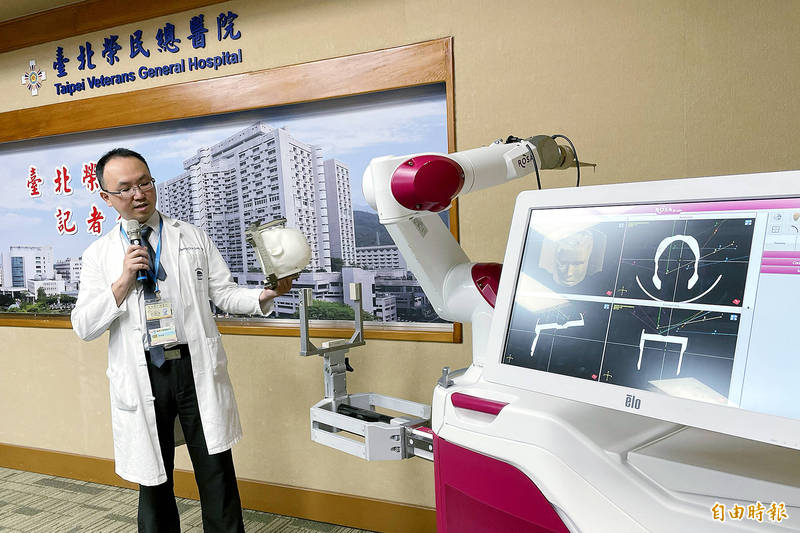《TAIPEI TIMES》Robot surgery facilitates epilepsy treatment

Taipei Veterans General Hospital neurosurgeon Lee Cheng-chia explains a surgical procedure during a news conference at the hospital on Thursday last week. Photo: Chiu Chih-jou, Taipei Times
By Chiu Chih-jou and Jonathan Chin / Staff reporter, with staff writer
A surgical robotic arm has been helping doctors at Taipei Veterans General Hospital perform brain surgeries to treat drug-resistant epilepsy.
Taiwan has about 200,000 to 300,000 people with epilepsy, of which 60,000 to 70,000 can only be treated by surgery that removes the condition’s physiological cause — called epileptic focus — from the patient’s brain, Lee Cheng-chia (李政家), a neurosurgeon at the hospital, said on Thursday last week.
Open brain surgery poses a high risk to patients, particularly those with an epileptic focus located deep inside the brain or spread over a wide part of the organ, making it more difficult for surgeons to bypass blood vessels or regions of the brain that govern vital functions, he said.
The hospital’s robot-assisted surgery system features 3D imaging and a real-time surgical instrument tracking capability, which enables epileptic surgeries to be performed without opening up the skull, he said.
Since receiving the machine in March 2021, the hospital has performed more than 100 successful procedures, Lee said.
Many patients would never have been treated surgically if the robotic arm was not there to mitigate risks associated with the procedure, he added.
Aided by the robotic arm, surgeons can perform a wide variety of procedures, including electrode implantation, deep brain stimulation and biopsy at twice the speed of unassisted surgery, while experiencing less fatigue and reducing chances of making a mistake, he said.
People with drug-resistant epilepsy are usually unable to live a normal life or work, Lee said.
Surgery can cure about 70 percent of patients with drug-resistant epilepsy and reduce the frequency of attacks in 20 percent of patients, he said.
The beneficiaries of the hospital’s robotic system include a 37-year-old man who had suffered from the condition since he was 10, said Yu Hsiang-yu (尤香玉), who heads the hospital’s epilepsy department.
The man faced a bleak prognosis because the epileptic focus was close to the visual cortex, meaning it could not be removed without a significant risk of blindness, she said, adding that the mood of the patient’s medical team was grim.
The surgery was made possible with the hospital’s acquisition of the robotic system, which allowed doctors to precisely target the focus with an electric pulse in lieu of open brain surgery, Yu said.
新聞來源:TAIPEI TIMES














